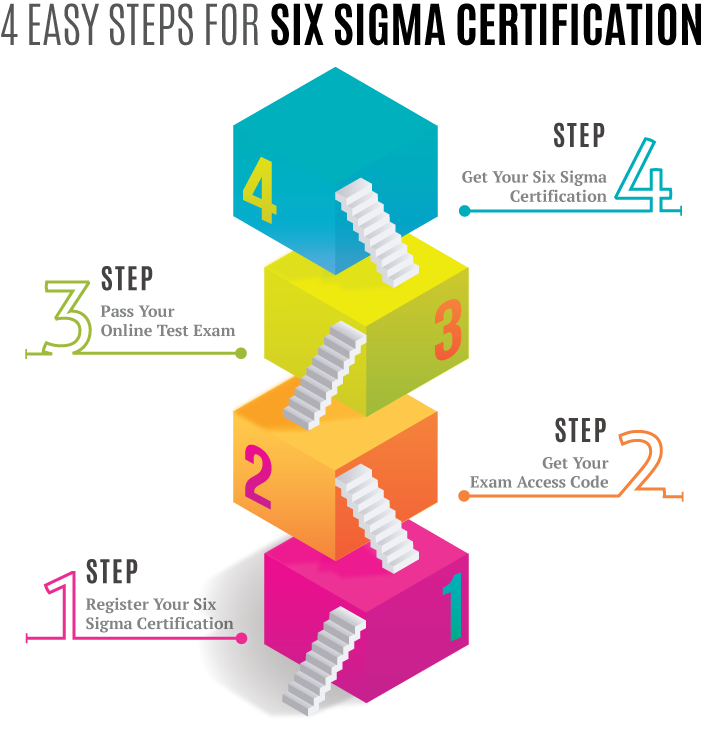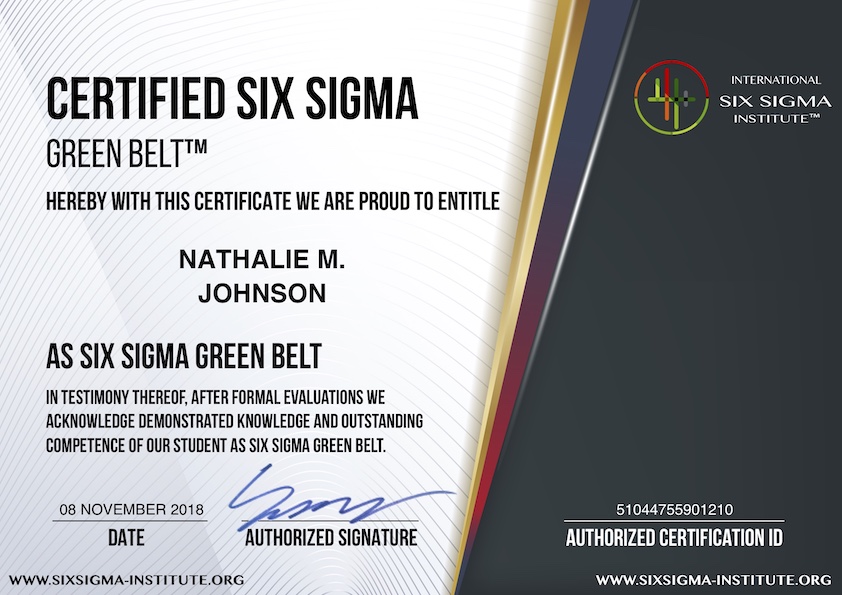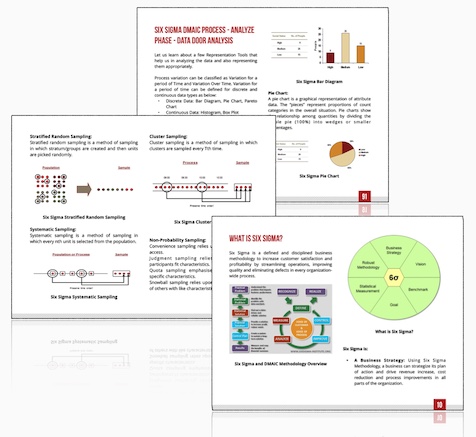Six Sigma DMAIC Process - Control Phase - Control and Implementation Plans
The four techniques used for process control plans are:
- Standardization
- Documentation
- Monitoring Plan
- Response Plan
Standardization:
Standardization of the “should-be” process steps is required to ensure all responsible for execution have the same understanding. Standardizing the should-be process helps answer queries like:
- What are the steps in the process?
- Who does these steps in the process and when?
- Where more detailed work instructions can be found?
Documentation:
Documentation is a necessary step to insure that the learning gained via improvement is institutionalized and shared across the team by having it documented with proper work procedures. Often the live processes have a tendency to evolve in an ad-hoc manner. How to accomplish each process activity is usually left up to the individuals and thus, much of the organizational knowledge resides only in the minds of all those responsible for execution. Procedure: A procedure is the documented sequence of steps & other instructions necessary to carry out an activity for a process.
Monitoring Plan:
Monitoring: It helps detect changes as and when they occur in the process and assure that improvements continue to hold for us to be able to meet customer requirements over a period of time. While observing a process a monitoring plan helps define:
- Key process and output measures for ongoing measurement of the improved process
- When data is to be collected and at how often
- Define the method for gathering, recording, and reporting data on the measures
Response Plan:
Response plan helps identify the next steps on what needs to be done if one detects a change in the process while monitoring. For each of the measure in the monitoring plan, the response plan helps define:
- What actions will be taken for an out-of-control event occurrence with a timeframe for the action
- Who takes action based on the monitoring data
- Where to find trouble-shooting procedures to fix problem
The key elements of a full scale implementation plan are:
- Clear Objectives
- Pilot Learning's Incorporated
- Implementation Milestones
- Resource Needs
- Influence Strategy
- Implementation Budget
- Process Control Plan
- Process Documentation
 SIXSIGMA INSTITUTE™
SIXSIGMA INSTITUTE™


